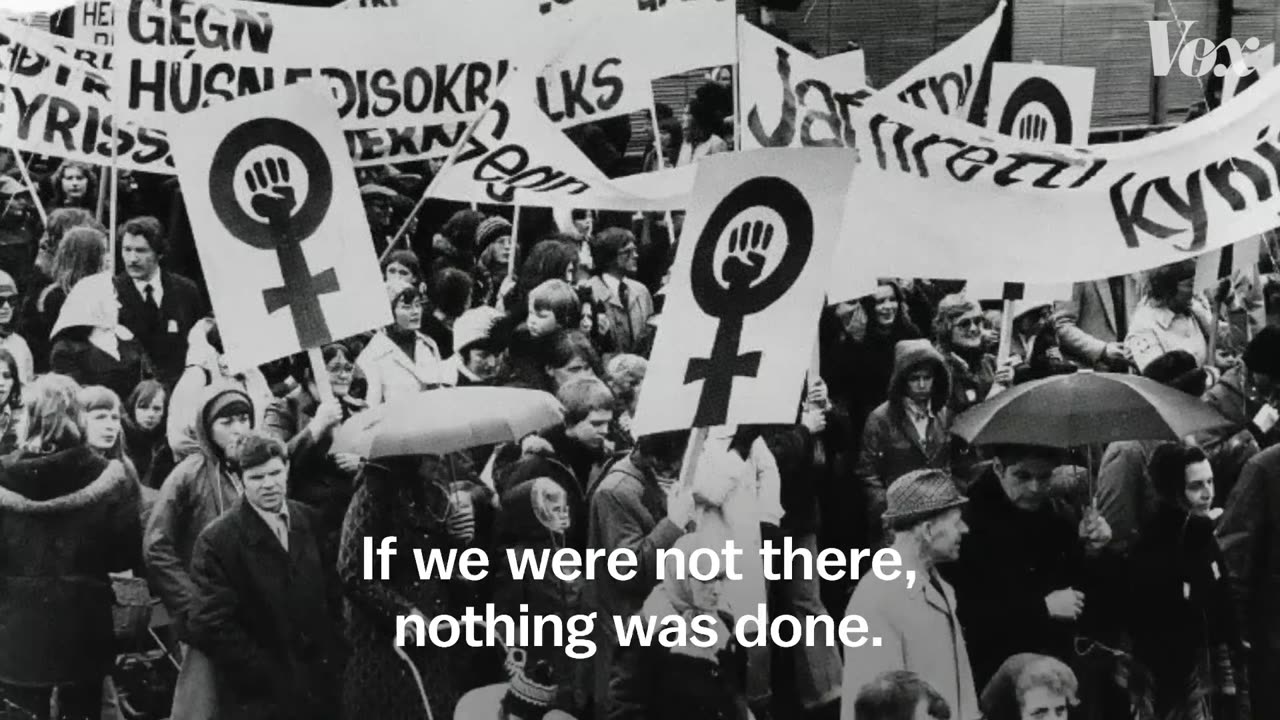Premium Only Content

The day women shut down Iceland
Iceland has made significant progress with its gender pay gap in the past 50 years. In 1975, Icelandic women made around 40 percent less than what men made. Today, that number is around 10 percent, making Iceland one of the few countries in the world where women are paid almost as much as men.
To understand how Iceland made so much progress, you have to take a look at what happened almost 50 years ago. In 1970, a radical feminist group called the Redstockings formed in response to outdated ideas in Iceland surrounding issues like violence against women, reproductive rights, and women’s labor. The Redstockings were known for their loud and public demonstrations, and in 1975 they proposed their biggest idea yet: a women’s strike. A day when women would collectively refuse to work at home and in the office to prove their economic worth to society.
The idea was divisive at first, but slowly, women from different political backgrounds got on board. To make the idea more accessible, they changed the name to “Women’s Day Off,” or “Kvennafrí,” and planned the strike from the ground up. It was a massive success. An estimated 90 percent of Icelandic women refused to work that day, and it shut down the country. Flights were canceled without flight attendants, and schools were closed without teachers. Men had to bring children to work because there was no child care at home.
The effects of Kvennafrí were felt across the country. Iceland quickly passed its first Gender Equality Act and soon after elected its first female president — and the world's first woman to be elected democratically. In this episode of Missing Chapter, we walk through how Icelandic women shut down their country, and talk to one of the women who helped do it.
-
 46:18
46:18
SB Mowing
2 days agoShe was LOSING HOPE but this SURPRISE CHANGED EVERYTHING
33K42 -
 LIVE
LIVE
ItsLancOfficial
9 hours agoWE LIVE 🔴WE LIVE 🔴 SUNDAY SUNDAYS!!!!!!! TARKOV
454 watching -
 4:09:32
4:09:32
EricJohnPizzaArtist
6 days agoAwesome Sauce PIZZA ART LIVE Ep. #59: Are You Ready for some FOOTBALL with GameOn!
30.8K7 -
 1:21:43
1:21:43
Jake Shields' Fight Back Podcast
15 hours agoJake Shields and Paul Miller!
65.3K118 -
 1:20:41
1:20:41
TRAGIKxGHOST
6 hours agoTrying to get SCARED tonight! | Are You SCARED!? | Screams Beyond Midnight | Grab a Snack
22.9K2 -
 5:21:24
5:21:24
StuffCentral
8 hours agoI'm baaack (no you can't play with me.. unless you a healer)
24.1K4 -
 2:25:11
2:25:11
TheSaltyCracker
9 hours agoTrump Is Not Dead ReEEeStream 8-31-25
100K140 -
 3:09:16
3:09:16
THOUGHTCAST With Jeff D.
7 hours ago $5.10 earnedLabor Day Weekend FORTNITE With THOUGHTCAST Jeff & the squad
26.2K4 -
 3:44:05
3:44:05
Rallied
10 hours ago $6.52 earnedSolo Challenges All Day
50K1 -
 9:02:14
9:02:14
iCheapshot
10 hours ago $0.52 earnedCall of Duty: Black Ops Campaign
14.3K1